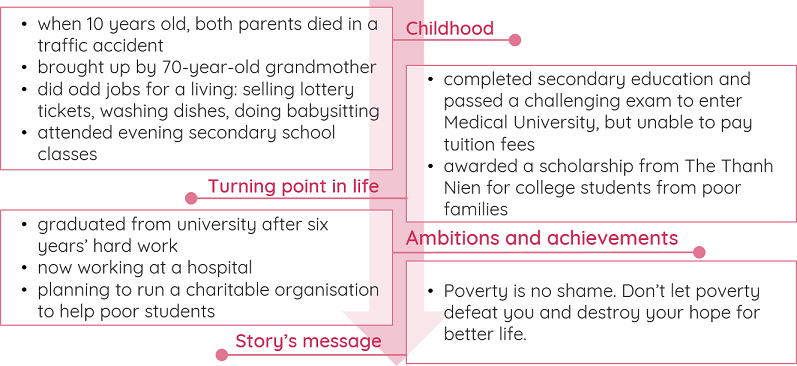Hãy nhập câu hỏi của bạn vào đây, nếu là tài khoản VIP, bạn sẽ được ưu tiên trả lời.

1 Cuộc sống tối đa của quà tặng Ri Ri điều Oh tình bạn, tôi đã hoặc đang bước vào chim cốc tay cũng có.
Món quà của cuộc sống tối đa là một tình bạn, tôi đã được đặt trên bàn tay khác
2 Dạ dày Brightness và Ri Tôi thà đi bộ một cuộc gọi bằng cách lọc một mình, chúng ta có nhưng bạn ho hơn là đi bộ và liên quan và dịch lọc đến và có bóng tối.
Hơn đi bộ sáng nơi mình, nó là tốt hơn để đi một nơi tối tăm, trong khi với bạn bè.
3 Là một người bạn thật sự, là những người đến đi bộ lên đến khi thế giới đi xa.
Một người bạn thật sự, là những người mà sẽ đi khi thế giới đi xa.
1 cuộc sống tối đa của quà tặng Ri Ri điều Oh tình bạn, tôi đã hoặc đang bước vào chim cốc tay cũng có.
Món quà của cuộc sống tối đa là một tình bạn, tôi đã được đặt trên bàn tay khác
2 dạ dày Brightness và Ri Tôi thà đi bộ một cuộc gọi bằng cách lọc một mình, chúng ta có nhưng bạn ho hơn là đi bộ và liên quan và dịch lọc đến và có bóng tối.
Hơn đi bộ sáng nơi mình, nó là tốt hơn để đi một nơi tối tăm, trong khi với bạn bè.
3 là một người bạn thật sự, là những người đến đi bộ lên đến khi thế giới đi xa.
Một người bạn thật sự, là những người mà sẽ đi khi thế giới đi xa.

bạn hiểu sai rồi , cái này như 1 câu đố tiếng việt , ko phải miêu tả như những j mk thấy mà ghép nó lại thành 1 cụm danh từ , ... rồi dịch sang TA
Cái này là câu đó trên Lingcor

Poverty is no shame
My parents died in a traffic accident when I was ten years old, so I grew up with my grandmother who was too old and weak to work. I had to leave school and did odd jobs to earn a living: selling lottery kets, washing dishes and doing babysitting. When I was 15, my grandma encouraged me to attend evening classes, so I could improve my literacy and job prospects.
After lots of hardship and effort, I completed secondary education and passed a challenging exam to enter Medical University, which is the dream of many students. However, I could not pay the tuition fees and had to reject the offer. The door to a new life was closed before me. I was completely disappointed and saw only gloomy days ahead.Then something incredible happened: I was awarded a scholarship from The Thanh Nien for college students from poor families. This was really a turning point in my life because I could start my university studies and hope for a better future.
Six years of hard work at the university and of trying to live on a very tight budget came to an end at last. Now I am working as a doctor at a hospital, but I will never forget those difficult days. I am planning to set up and run a charitable organisation to help poor students, as a way to acknowledge other people for supporting me.
I've told my own story hoping to encourage other people me to overcome hard times. Don't let poverty defeat you and destroy your hopes for a better future. This is my motto.

that the accident had occurredoccurring the accidentthe accident to occurhow the accident had occurred
All his companies had been successful and he was known to be extremely rich.
When asked to account for completely they couldn’t recall anything.
that the accident had occurredoccurring the accidentthe accident to occurhow the accident had occurred
All his companies had been successful and he was known to be ___extremely____ rich.
extremely absolutelythoroughlycompletely

helllllllllllllllllloooooooooooooooooooooooooooooooooooooooooooooooooooooo

1. The suspect...........being near the bank at the time of the crime
A. claimed B. accused C. denied D. refused
Denied + V_ing
2. The man is believed...........over a thousand marathons since he started
A. to run B. to be running C. he has run D. to have run
Sb is believed to do sth
3. Paul didn't decorating so he got a professional decorator.........his flat for him
A. designing B. design C. she designed D. to design
Get sb DO sth
4. ................all her emails, she switched off her computer.
A. sending B. She sent C. Having sent D. Sent
Dạng rút gọn, nếu viết lại đầy đủ sẽ là: She sent all her emails, she switched of her computer
5 ,You shoulf take a few days off work. It won't you any ham.
A. do B. give C. make D. pay
Do harm: làm hại
6. Slow down, Barry. I can't.........you
A. keep up with B. come up to C. come up with D. reach up with
Keep up with sb: go or make a progress at the same rate as others
7. Budapest is a wonderful city full of cuiture and.........in history.
A. sprawling B. renowned C. steeped D. bustling
Steep sth/sb in sth


